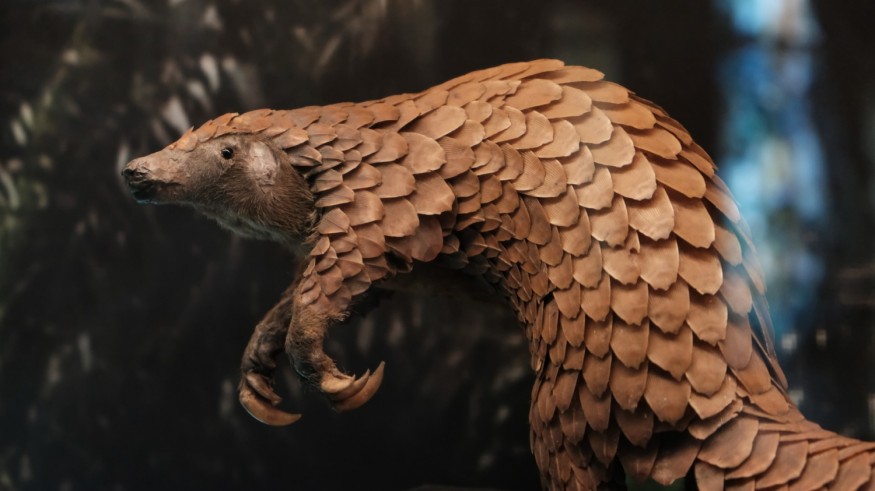
According to reports from an environmental organization, 72 Chinese pharmaceutical companies have been found to have used the body parts of several endangered species, with the top three firms receiving bank-backed finances.
72 Chinese Pharmaceutical Companies Use Endangered Species
The Environmental Investigation Agency UK (EIA) reported on Monday that 72 companies licensed by China's drug regulator are using leopard and pangolin body parts, endangering these threatened species. Three major traditional Chinese medicine (TCM) firms, including Beijing Tong Ren Tang, Tianjin Pharmaceutical, and Jilin Aodong Medicine, are involved.
EIA found at least nine products containing leopard and/or pangolin components produced by these companies. Some of them also sell products with tiger and rhino parts, contrary to China's stated ban on using these in medicine. EIA's Avinash Basker, a legal and policy specialist, warned that this industrial-scale usage could drive these species closer to extinction.
Top Three Pharmaceutical Companies in China
China's beloved brands, like Tong Ren Tang, trace their roots back to 1669 and boast a royal history. They've become the largest TCM producer globally, with substantial international investor support, including 62 banks, including big names like BlackRock, Citigroup, and HSBC. The EIA calls on these shareholders to divest, deeming their endorsement of such harmful exploitation deeply disappointing, given their prior commitments to the contrary.
Body Parts of Endangered Species
Rapid species loss sparks debate on Earth's sixth mass extinction. Extinctions result from climate change, habitat loss, hunting, and invasive species. Traditional medicine's use of animal parts fuels declines, despite lacking scientific support. Rarity doesn't shield species; it inflates their market value.
Rhinoceros
Rhino poaching, nearly driving all species to extinction in the 20th century, declined after China removed rhino horn from approved medicinal ingredients. However, recent rumors in Vietnam claiming a cure for liver cancer have led to increased poaching and a new threat to rhino populations.
Water Buffalo
Scientists acknowledge the potential disappearance of purebred wild water buffaloes. Domestic or hybrid varieties may be all that remains in Southeast Asia, with differing estimates of their numbers. Regardless, the species is endangered, yet hunting continues in places like Cambodia due to traditional medical beliefs. Water buffaloes have vanished from parts of Laos, Bangladesh, Indonesia, and Sri Lanka.
Chinese Alligator
The small freshwater crocodilian species, numbering less than 200 in the wild, primarily inhabits a small Anhui province reserve along the lower Yangtze River. Habitat destruction, dam construction, and hunting have severely affected them. Alligator meat is promoted for curing colds and cancer, and organs for their medicinal properties. Successful captive breeding efforts have led to thousands of captive animals and reintroduction initiatives.
Asian Elephant
Asian elephants, initially believed to be poaching-resistant due to their limited ivory tusks, are hunted for meat, hide, and other parts. Habitat loss and human-elephant conflict pose greater threats.
Musk Deer
Asia's musk deer, facing decline, are hunted for their musk pods, which are used in perfumes and traditional medicines. While synthetic alternatives exist, hunting continues due to the demand for musk and meat.
Sun Bear
Sun bears are hunted for their gallbladders, used in traditional medicine. Their population has fallen by over 30% due to hunting and habitat loss. Laws against their killing are poorly enforced, and commercial farms capture wild bears for bile production.
Grevy's Zebra
Grevy's zebras, once widespread, now number around 2,500 due to hunting and water competition with livestock. They're limited to northern Kenya and parts of Ethiopia. Conservation efforts, including cooperation with traditional healers, seek to protect the remaining population.
Tiger
Tigers' range has shrunk to a few countries in East and South Asia, with only about 3,200 left in the wild. Their decline is linked to the use of their body parts in traditional medicine and superstitions. Criminal syndicates can earn up to $50,000 per tiger, despite international trade bans, as some countries allow tiger farming, further fueling black-market demand.
Banteng
Wild banteng's population is now 2,000 to 5,000, down 90% since the 1960s. Poaching for their horns and habitat loss are major threats. In 2003, banteng became the first successfully cloned endangered species, offering hope for conservation.
Hawksbill Sea Turtle
Hawksbill sea turtles are critically endangered due to poaching for their shells used in souvenirs, jewelry, and traditional medicine, and their oil. Bans and sting operations have had limited success in halting their decline.
Pangolin
Pangolin scales, like rhino horn and human fingernails, have no scientific proof of medical efficacy. Still, pangolins are among the most hunted animals despite local consumption decline. Lucrative illicit international trade, particularly in China, Vietnam, and Southeast Asia, is rampant where pangolins are seen as a luxury symbolizing wealth and status.
© 2025 NatureWorldNews.com All rights reserved. Do not reproduce without permission.





